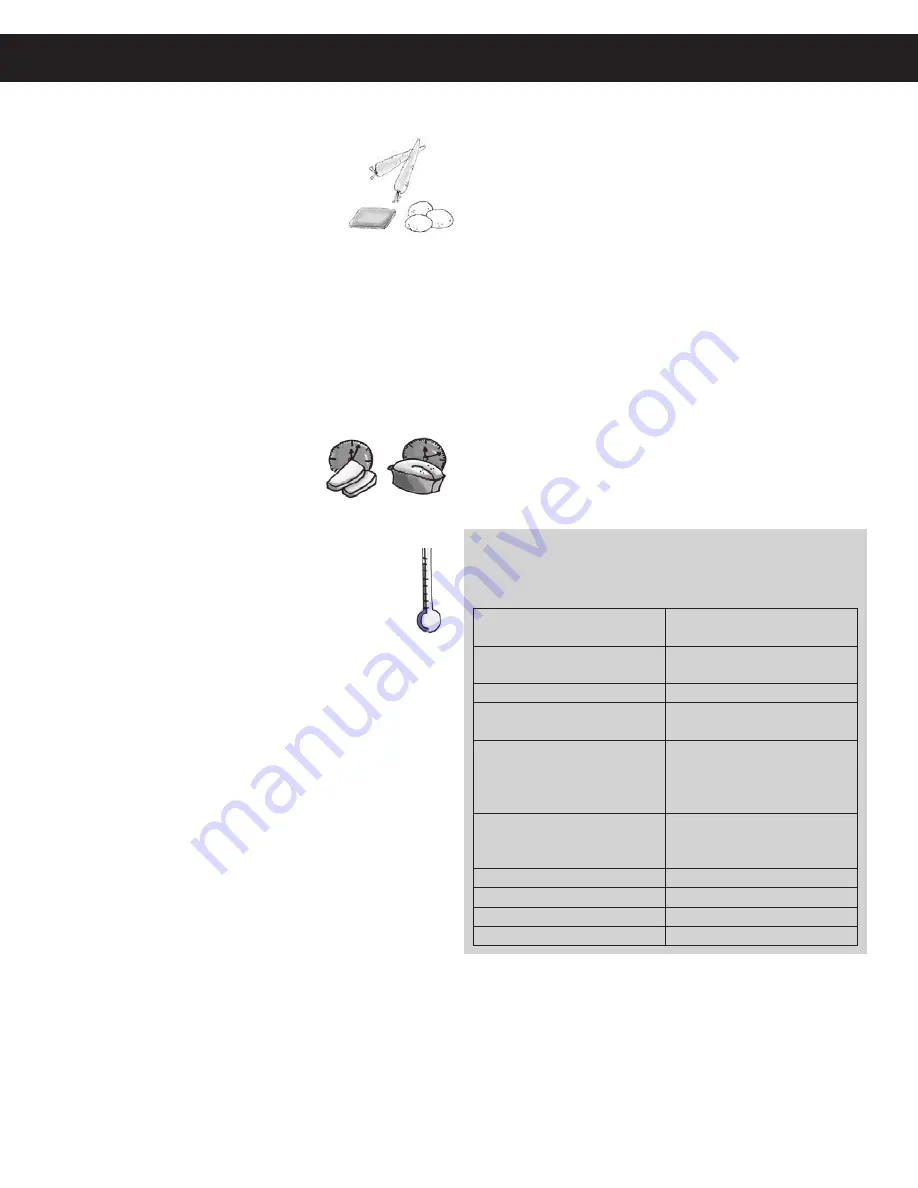
31
Food Characteristics
Food Characteristics
Density
Porous, airy foods take less time to heat than
heavy, dense foods
Shape
Uniform sizes heat more evenly. To compensate for irregular shapes,
place thick pieces toward the centre of the Grill Pan and thinner pieces
toward the edge of the Grill Pan.
Size
Thin pieces cook more quickly than thick
pieces.
Starting Temperature
Foods that are at room temperature take less time to cook
than if they are chilled, refrigerated or frozen.
Cooking Techniques
Piercing
The skin or membranes on some foods will cause steam to build up during
cooking. Foods must be pierced, scored or have the skin peeled off before
cooking to allow steam to escape.
Pierce whole potatoes with a fork. Score frankfurters and sausages. Pierce
fresh sausage with a fork.
Browning
To shorten the baking or cooking time and to get a good color effect, apply
dark soy sauce or spicy sauce before cooking. For quick breads or muffins,
brown sugar can be used in the recipe in place of granulated sugar, or the
surface can be sprinkled with dark spices before baking.
Cooking Time
A range in heating time is given in each recipe. The time range
compensates for the uncontrollable differences in food shapes, starting
temperature and personal preferences. Always cook food for the minimum
cooking time given in the recipe and check for doneness. If the food is
under cooked, continue cooking. It is easy to add time to an under cooked
product. Once the food is overcooked, nothing can be done!
Test for Doneness
The same tests for doneness used in conventional cooking may be used.
Meat is done when fork-tender or splits at fibers. Chicken is done when
juices are clear yellow and drumstick moves freely. Fish is done when
it flakes and is opaque. Cake is done when a toothpick or cake tester is
inserted and comes out clean.
Check foods to see that they are cooked according to the United States
Department of Agriculture’s recommended temperatures.
To test for doneness, insert a meat thermometer in a thick or dense area
away from fat or bone. NEVER leave the thermometer in the food during
cooking, unless it is approved for oven use.
Cook all food to these minimum internal temperatures as measured
with a food thermometer before removing food from oven. For
reasons of personal preference, you may choose to cook food at
higher temperatures.
Product
Minimum Internal
Temperature & Rest Time
Beef, Pork, Veal & Lamb
Steaks, chops, roasts
145 °F and allow to rest for at
least 3 minutes
Ground meats
160 °F
Ham
, fresh or smoked
(uncooked)
145 °F and allow to rest for at
least 3 min.
Fully Cooked Ham
(to reheat)
Reheat cooked hams
packaged in USDA-inspected
plants to 140 °F ; all others to
165 °F.
All Poultry
(breasts, whole
bird, legs, thighs, and wings,
ground poultry, and stuffing)
165 °F
Eggs
160 °F
Fish & Shellfish
145 °F
Leftovers
165 °F
Casseroles
165 °F







































